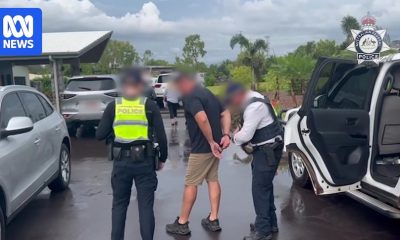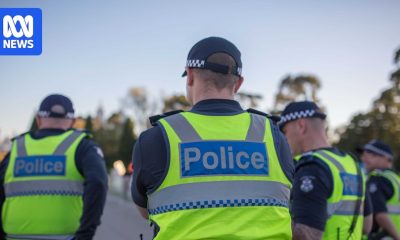Health
Australia risks echoing Singapore’s fate – Morning Bulletin
Singapore had COVID under control and was praised for its textbook response until the virus found a weak point. Now, Australia risks the same fate.

Australia risks following the coronavirus trajectory of one-time global darling Singapore if it does not manage to get a grip on the outbreak threatening those in cramped living conditions in Melbourne, experts have warned.
The Asian city-state was initially singled out for high praise by Australian Prime Minister Scott Morrison and the World Health Organisation (WHO) for its technology led, no-holds-barred approach to containing the coronavirus pandemic in the early months of 2020.
The city home to 5.6 million people which serves as a global travel hub, rolled out an effective “detect, isolate and track” response which saw cases hospitalised, contacts tracked down and strict penalties imposed for those who flouted the system.
MORE: Follow live coronavirus updates
MORE: Virus warning the WHO is ignoring
Director of communicable diseases at the Ministry of Health Vernon Lee said authorities were focused on staying “one or two steps ahead of the virus”.
“If you chase the virus, you will always be behind the curve,” he said.
WHO director general Tedros Adhanom Ghebreyesus said he was “very impressed with the efforts they are making to find every case, follow up with contacts, and stop transmission.”
Prime Minister Scott Morrison said it had been one of the more “successful countries” which had been “effective in managing and limiting the transmission of this virus”.
But it wasn’t to last.
In April cases exploded past 1000 a day, with more than 44,983 confirmed at present – more than Japan, South Korea and Malaysia – after the virus took hold in cramped and unsanitary dormitory conditions migrant workers were living in.
Authorities battled to contain the pandemic and were forced to extend the city’s partial lockdown by one month amid the second wave.
Now experts have warned Australia is at risk of going down the same path with Melbourne cases doubling in the last seven days and nine tower blocks forced into quarantine.
The outbreak has already led to global attention with some claiming it could threaten Australia’s successful “flattening the curve” narrative.
On Monday, deputy chief medical officer Professor Michael Kidd said while Australia might not be in the grip of a second wave, it was certainly experiencing a “secondary surge” of infections and authorities did not know how it would play out.
Professor Dale Fisher of Singapore’s National University told the ABC’s 7:30 on Monday controlling the virus in Singapore’s high-density dormitory population – where more than 300,000 people live – was very difficult with a conventional response.
He was part of a team that worked to help fight COVID-19 infections in the dormitories and said at the time Singapore decided to extend its lockdown it was recording 70 cases a day.
“There were quite a few unlinked cases and we just thought it was time, rather than waiting for it to get to 100, 300, 500 when it gets much more difficult to control,” he said.
Victoria recorded 127 new infections on Monday, with 74 and 108 cases on Saturday and Sunday respectively. Those figures came after more than two weeks of double digit case growth in the city.
At present the Melbourne tower blocks and surrounding suburbs are in lockdown but residents are still able to leave the area for work or study if necessary. Authorities have stressed they will not hesitate to lockdown the state if needed.
However UNSW Professor of epidemiology and WHO adviser Mary Louise McLaws said the partial approach may not work and the most effective thing to do with infected people is move them to purpose-built facilities.
“They have a very strange version of ring-fencing where you can go to study or go to work which is not a classic version of ring-fencing that has been used very effectively in Wuhan and other places where people are within their homes,” she said.
“They can’t go to work and particularly without a mask on because they could spread it even further.”
She said authorities in Victoria will be “terrified” at present because they are always “five to ten days behind” the virus in terms of the incubation period.
Professor Fisher said other states will be watching closely and gaming their own scenarios because “this can happen anywhere”.
You’ve just got to find your weak spot. If you don’t find it, the virus will.”
Originally published as Australia risks echoing Singapore’s fate

-

 General20 hours ago
General20 hours agoVote counting begins for Townsville mayoral by-election
-

 General22 hours ago
General22 hours agoThree NT residents charged with fraud over alleged $71 million Defence contract scheme
-

 General23 hours ago
General23 hours agoPolice to patrol Melbourne shopping centres in 90-day youth crime prevention trial
-

 General17 hours ago
General17 hours agoEngland completes sole Ashes warm-up match with flurry of runs to Ollie Pope, Joe Root
